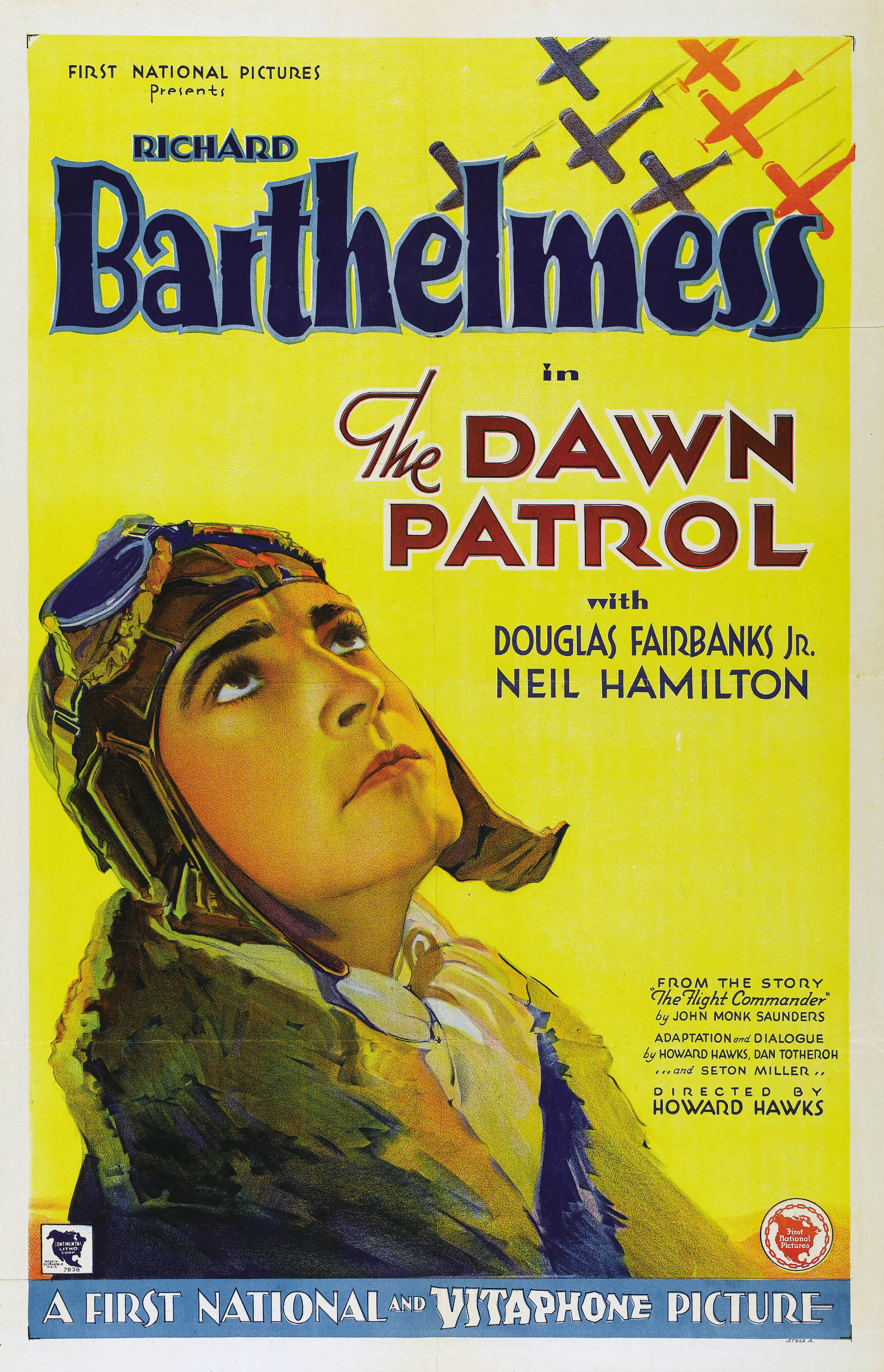 |
| Image from Wikimedia Commons |
It's the world of these pilots that forms the backdrop of the next novel serialized from the Herridge Lake Public Library: High Risk. The serialization begins tomorrow (all things being equal) but I wanted to post a little something about stunt flying in order to provide some information to readers who might not be as obsessed as yours truly with, say, the differences between the two different versions of The Dawn Patrol. (You did know there were two different movies, didn't you?)
Motion picture stunt flying in some senses predates Hollywood itself: dummy aircraft on prop stands, or real aircraft suspended from wires over moving scenery, were used to simulate flying scenes as early as 1912; the earliest films of flying known date from 1905, when the movie capital of the U.S. was Long Island.
Stunt flying became a part of Hollywood at the end of the first world war, when aviation was still new and exciting and pilots were pop-culture heroes (imagine a cross between a pro athlete and an astronaut today). For nearly a decade flying in the movies was a contemporary thing: stories were set in the present and flying scenes were used to advance or resolve the plot. (Flying scenes were very popular in serials, which demanded a steady succession of melodramatic crises.)
 |
| age from Wikimedia Commons |
The world inhabited by Casey, the war-veteran hero of High Risk, was born in the mid- to late-1920s. For nearly a decade after the end of the Great War, war movies were anathema in Hollywood. In 1925, though, MGM released The Big Parade, a war movie starring the biggest male star of the time, John Gilbert. The movie was a smash hit, and suddenly war movies were the big thing in Hollywood (which has never met a new idea it wouldn't rather ignore in favour of something that was successful last week).
From the trenches to imagined dogfights was a matter of about a year. In 1926 Paramount started filming Wings, an epic movie set in the American air war of 1918. The director, William Wellman, had served as a combat pilot in the Lafayette Flying Corps (Escadrille N.87, and not the Lafayette Escadrille as is often claimed); the script was adapted from a story by another wartime pilot, John Monk Saunders and co-starred a third, Richard Arlen (neither Saunders nor Arlen served in combat).
At a time when Hollywood made a movie in a matter of weeks, Wings took nearly nine months to shoot, and much of that time was spent on footage of aerial combat. Wellman and his crew invented the sort of stunt flying that is Casey's bread-and-butter in High Risk: up to 300 pilots were involved in various sequences (most of them members of the U.S. Army Air Service, but some of them already famous in Hollywood as stunt pilots) and some of the scenes were so convincing that they have been mistaken for actual combat footage from the first world war (of which there is in fact almost nothing in existence).
Most of the stunts performed in Wings had already been done in the movies by 1926, it's just that in Wings everything was bigger, better, more explosive. One stunt pilot, Dick Grace, broke his neck doing a crash sequence in the film (he not only survived this incident, he became one of the few early stunt pilots to die of old age)*.
_04.jpg) |
| Image from Wikimedia Commons |
Hell's Angels took much, much longer to film than had Wings. Production began in October 1927, and the movie wasn't released until 1930—after the release of the first version of The Dawn Patrol. In part the long gestation was the result of Hollywood's switch to sound; Hughes decided to turn his movie into a talkie and that required extensive re-shooting. But Hughes was also responsible for many of the delays: he was an exacting producer but also a tight-fisted man, and he simultaneously blew through huge amounts of money tracking down and buying first world war aircraft and tried to low-ball the wages of the men who would fly and crash them. (The extended dogfight scene in the movie took four months to shoot—again, remember that at the time six weeks was considered a lengthy movie shoot.)
Hughes did manage to generate some impressive aerial footage—or, rather, his stunt pilots and cameramen did. Even though the resulting movie can be painful to sit through (Jean Harlow was only 18 when she was cast, and she was forced to learn to act on the job—not always with success) the flying sequences remain quite thrilling; some of them are the best ever done.
 |
| Image from my library |
Despite the somewhat sensationalist descriptions of the stunt-flying of this period—which did, after all, kill a significant number of men over those two decades—you should not assume that this work was seat-of-the-pants stuff. The pilots, cameramen and unit directors who worked on these movies were serious professionals, and the stunts themselves were carefully designed, choreographed in fact, and as a rule much more safe than they appear. Which is the whole point of stunt work, of course.
This post is based both on my years of watching movies and writing movie criticism, and especially on the book The Motion Picture Stunt Pilots and Hollywood's Classic Aviation Movies, by H. Hugh Wynne. The book is long out of print, but used copies are fairly easy to find.
*In 1932 Grace wrote his own movie treatment for RKO and did some of the flying in the resulting production. The movie was called The Lost Squadron, and it was about Hollywood stunt pilots working on a dangerous production for a tyrannical director. Any similarities between this movie and the film-within-the-story of High Risk are, of course, purely coincidental.

No comments:
Post a Comment